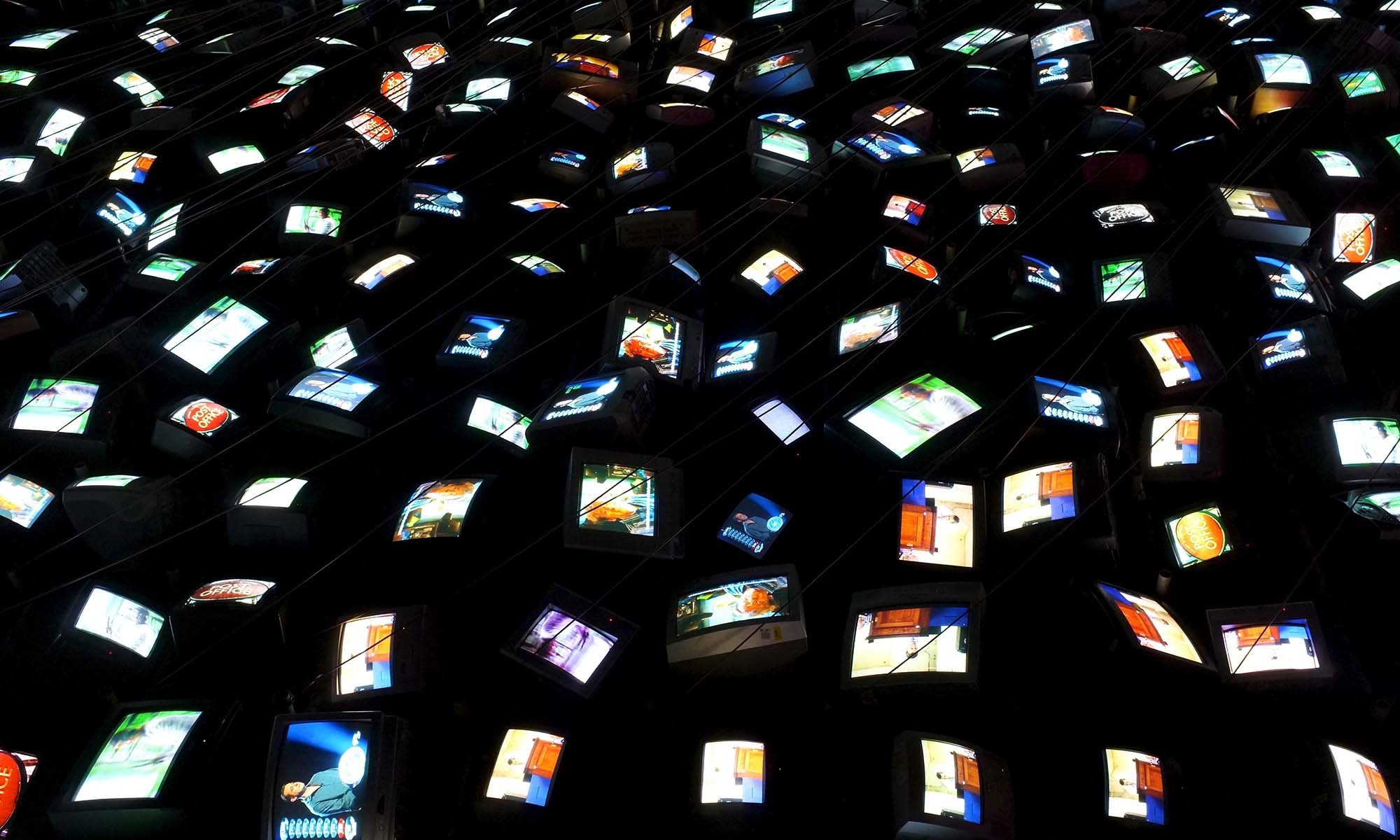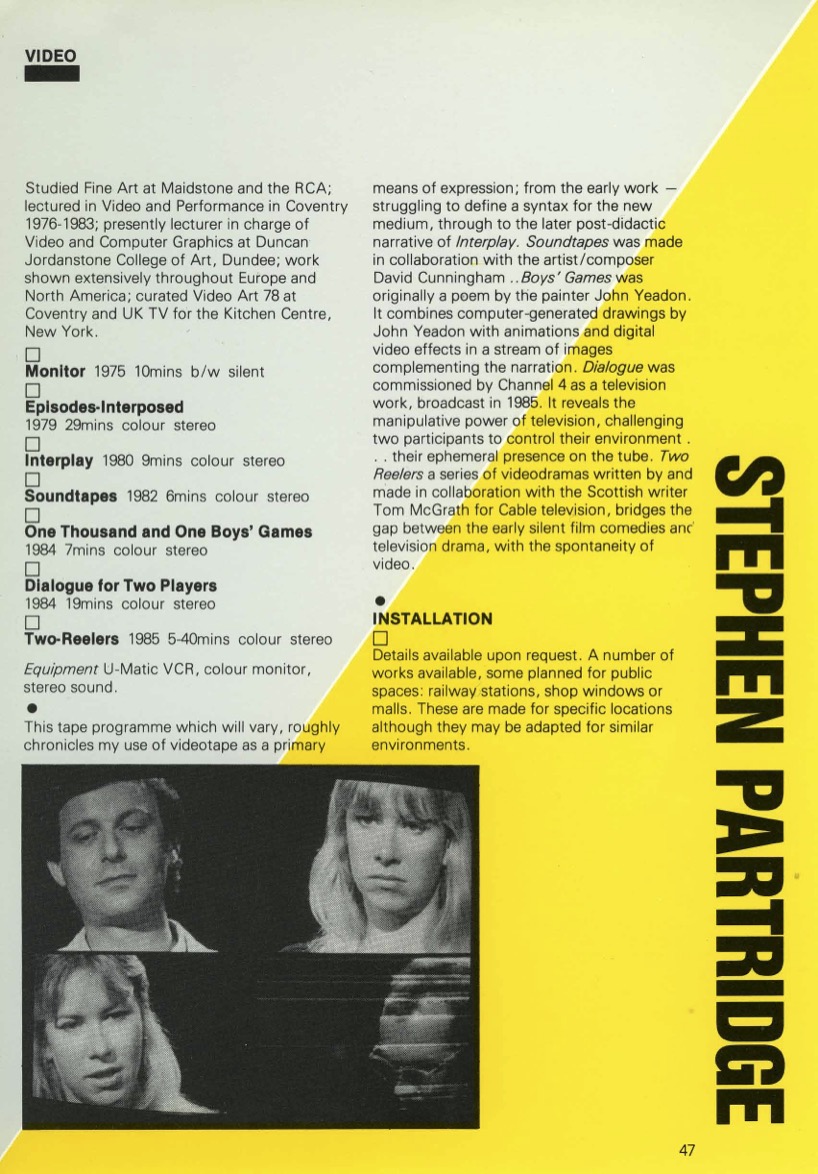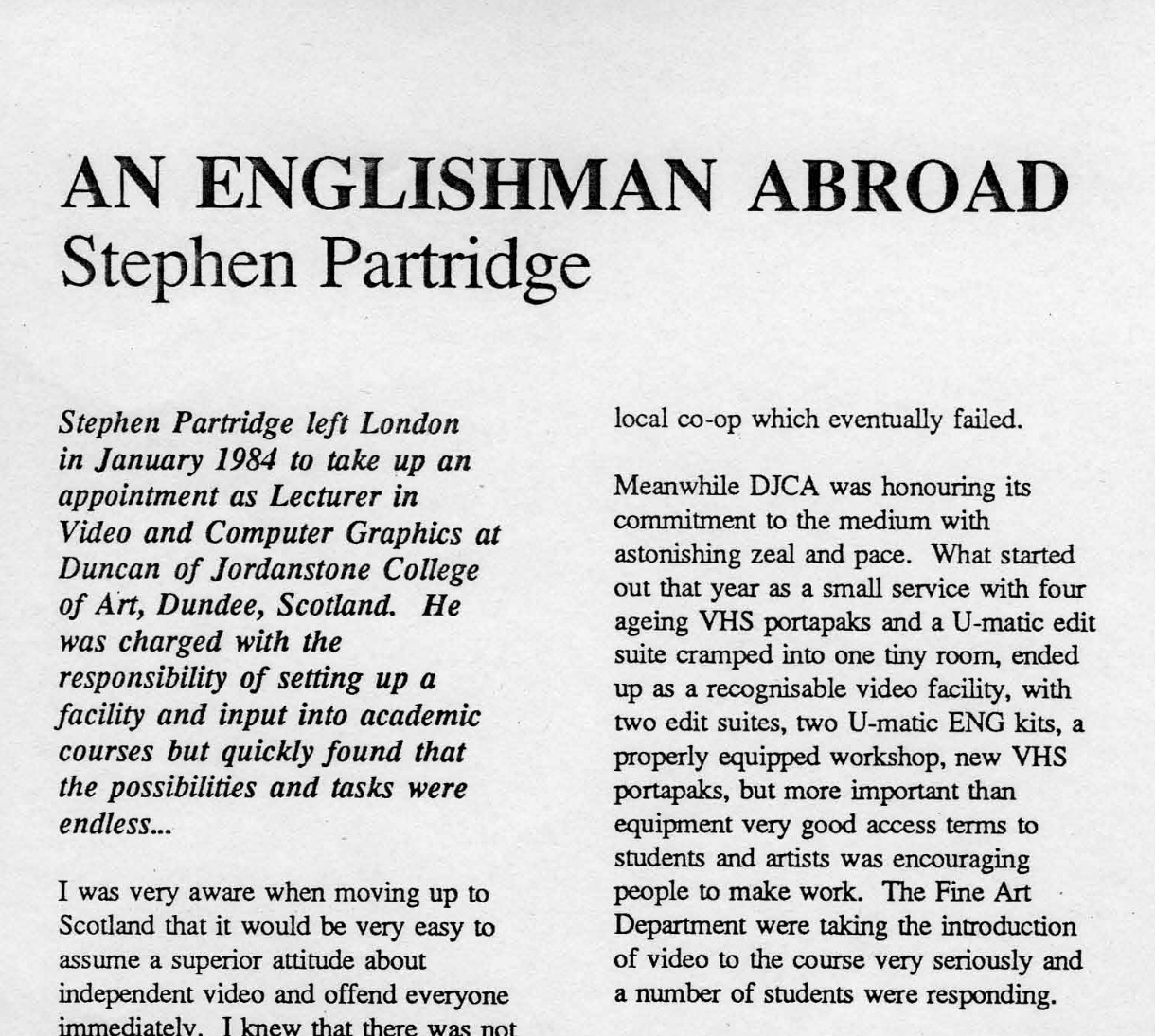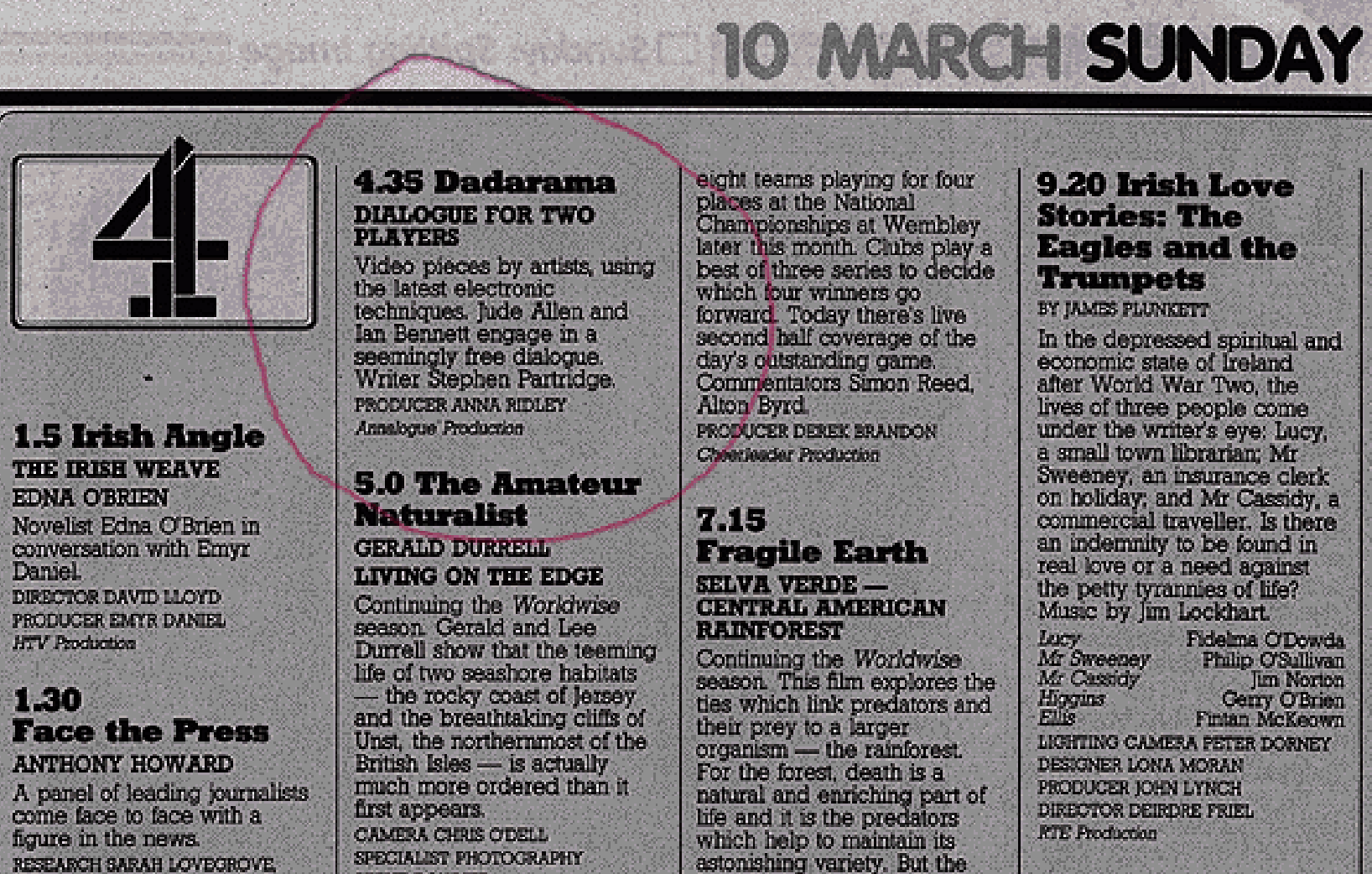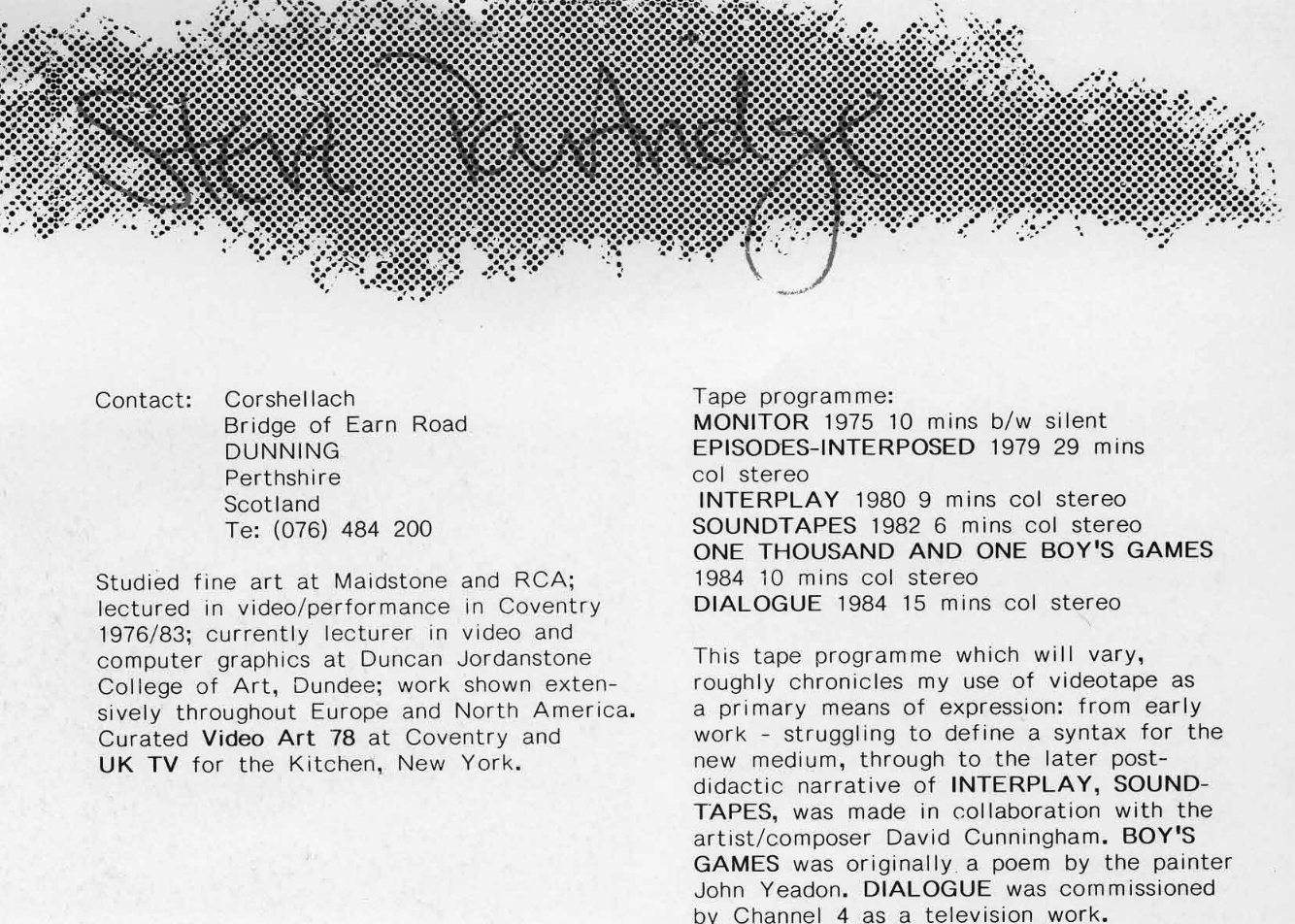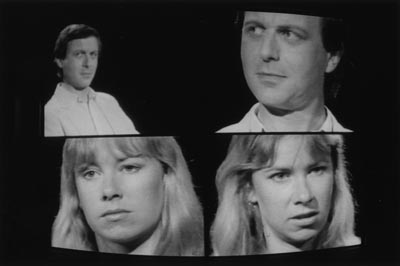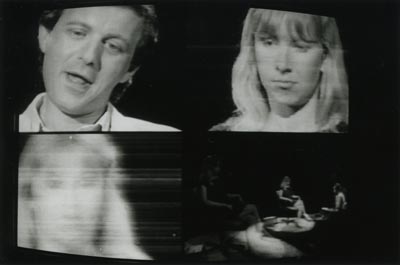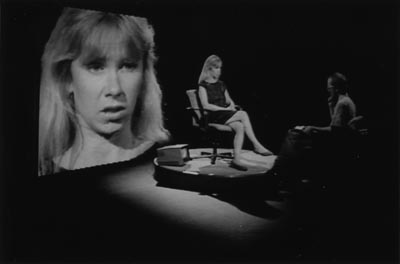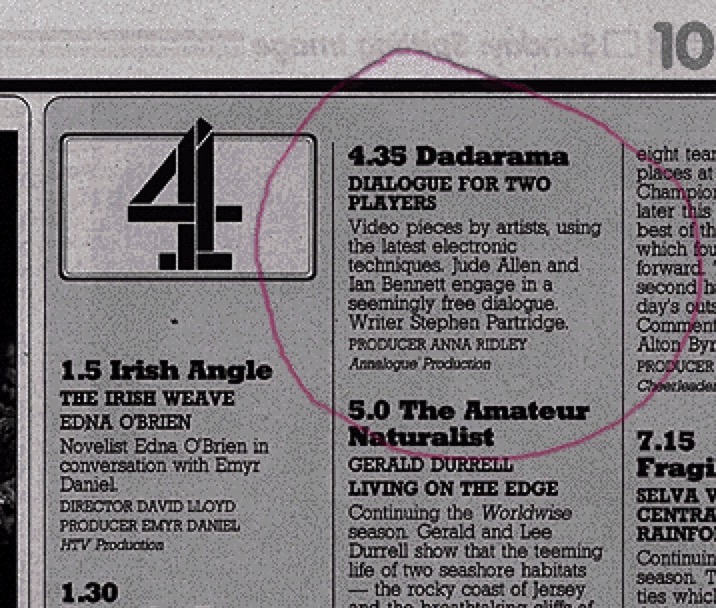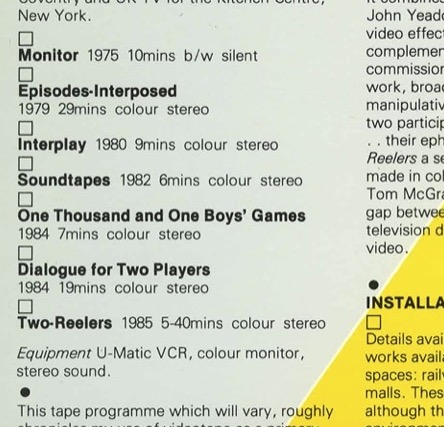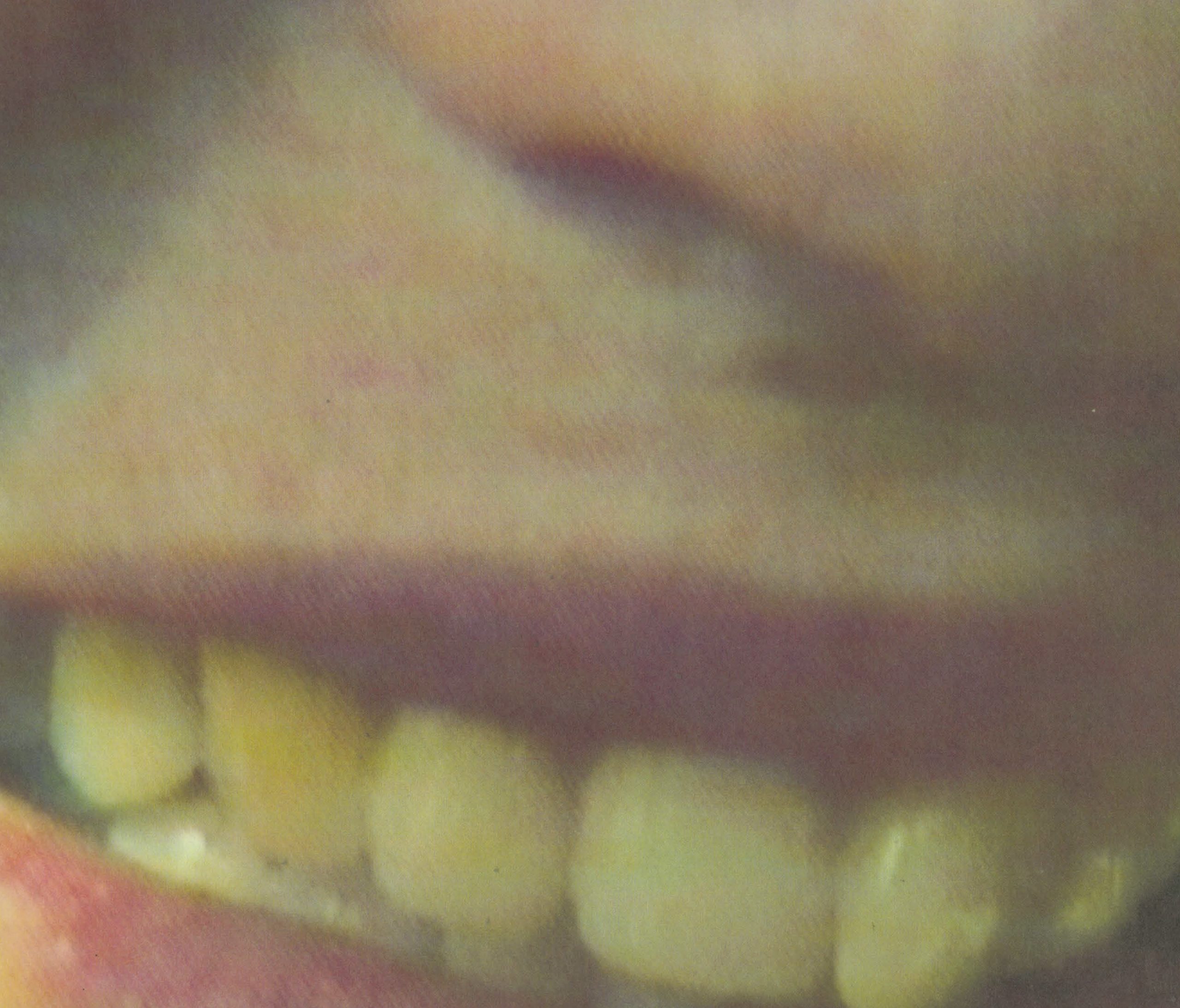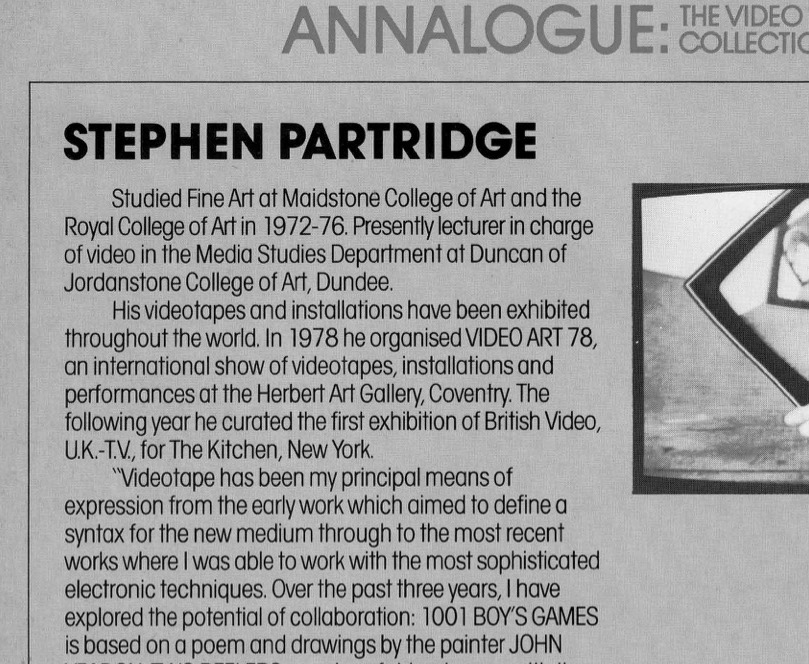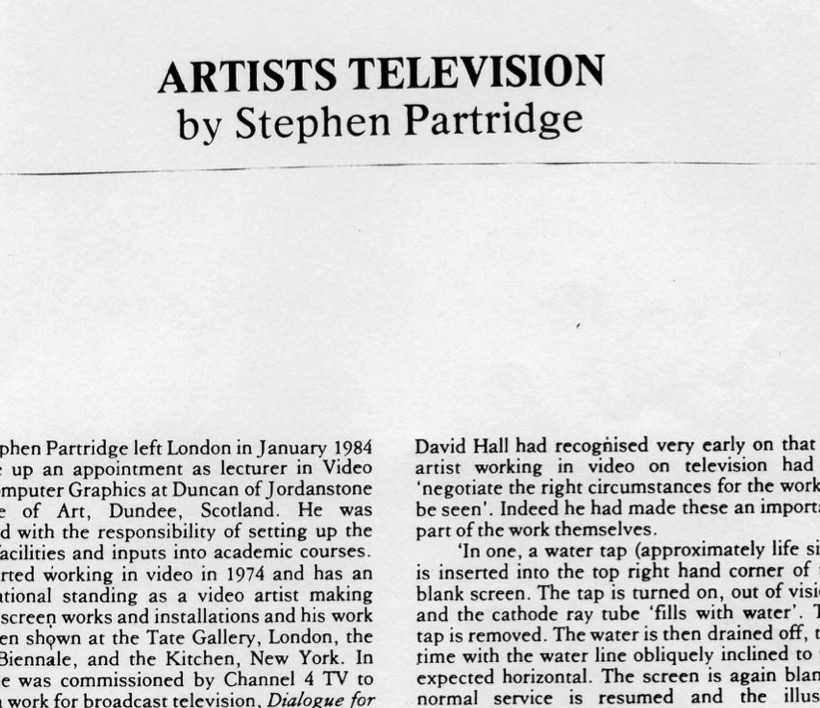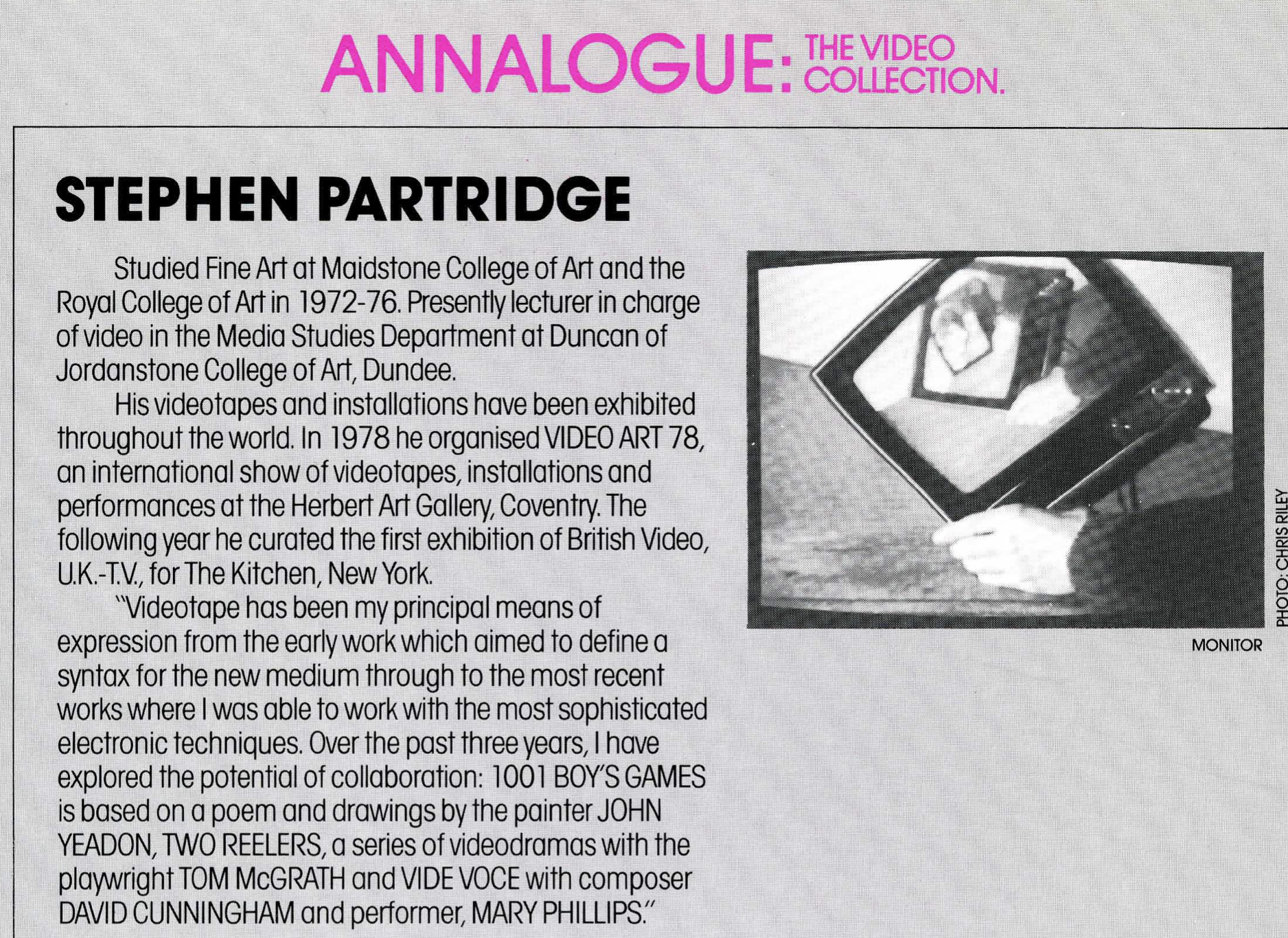Dialogue for Two Players (1984)

Creator:
Partridge, StephenContributor(s):
- Ridley, Anna (Producer)
-
Actors: Jude Allen and Ian Bennett, Producer Anna Ridley, Annalogue Productions for Channel 4 TV Ltd
-
This work is part of the rewind archive.
Duration: 19 minutes
Year: 1984
Original formats:1" SMPTE Type C
Media types:Video
Broadcast: Channel 4 Television 1984
Funding source: Channel 4
First exhibited: Channel 4 Television 10th March 1984
Technical details: Single screen made for Broadcast Television work. Offline edit sequences composited using Quantel Paintbox in Dundee. Online Edit at Trillion London
‘Dialogue for Two Players is the final version of a series of works started in 1977 with DIALOGUE FOR FOUR PLAYERS-a four monitor work, commissioned by the AIR Gallery, London. The works centre around a behavioural manipulation of a number of people (in this case two) within an environment in which they seem to have much freedom and with which they have to come to terms. The freedom is however an illusion, they may make only limited ‘moves’ prescribed by the ‘rules of the game”.’ Stephen Partridge
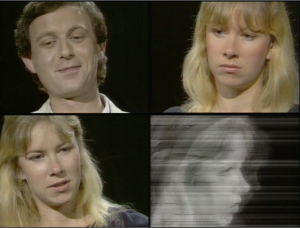
The most familiar image on TV is the human face. The fact that information is best disseminated through this image is a popular concept upheld by broadcasters. Because it is familiar the viewer is not encouraged to scrutinise the intervention that occurs when any programme is made . Televisual language has been accepted to the point where procedures have become institutionalised.
The adherence to a literary based (biased) tradition as being the pivotal point of communication often outweighs the importance of behavioural/environmental information. The incidence of framing a face to approximate eye-to-eye contact bears this out. This convention restricts the viewers’ appraisal and analysis of contributors to a discussion or interview. Quite often the participants are asked to confine their movements, and the studio environment is constructed to this principle. (The most often iniquitous shooting convention is the recording of ‘reaction’ shots after a discussions taken place.)
The notion that television is a transparent medium indicates a failure to grasp the significance that production decisions bring to the appreciation of any subject. This piece ‘Dialogue for Two Players’ based on the use of familiar forms/images is structured so as to make visible and available information normally edited out. The construction aims to more precisely align content and method, and, combined with visually manipulative techniques underlines how material can be transformed.
Anna Ridley, Producer. 1983
Letter to Stephen Partridge from Louise Crawford regarding the Edinburgh Fringe Festival and the exhibition of ‘Dialogue for two players’.pdf here
-
Quotes:
“The tellingly titled Dialogue for Two Players, also 1984, moves into quasi-dramatic space, in which the seemingly spontaneous relationships, are revealed not just as a construct but also as a complex puzzle. It implicitly comments on and critiques the ‘confessional’ modes of video and its illusion of real presence. It thus rejects that was at the time a dominant style in artist’s video, turning on its head the simpler versions of the slogan that ‘the personal is political’. At the same time it is a political work in a different sense, questioning the popular TV format of the in-depth personal interview which it ironizes. As such, and with Partridge himself playing the part of interviewer/director, it is his most overt ‘intervention’ into documentary drama even as he subverts it.” – Stephen Partridge, catalogue, University of Dundee, 1998, MONITORING PARTRIDGE by Al Rees, 60pp, ISBN 1 899837 29 9
“Dialogue for Two Players was created specifically for the context of broadcast TV: instead of the production process being hidden, SP went further in his objective of revealing the dialogue and interplay between the two players, this time a man and a woman. Here the process is exposed as he describes ” Multi screen digital techniques are used to reveal the relationship between the two participants and the structural manipulations which are occurring both within the original recording and its post-production (editing).” ….” The artist’s presence is, at first, ambiguous as he is also present on screen, but his manipulations both on screen (directions to the cameras and actors), and off (obvious editing and juxtapositions of the material) gradually reveal his role.” SP deliberately used the classic interview set up, familiar to any TV viewer, but within a few minutes that convention was broken down as the interviewer (SP) did not lead the discussion, as one would expect, and said very little. The two players had the freedom to say or do whatever they wanted only receiving cues as to when to start and stop. It says much for the power and influence of TV that the two players abided by the conventions for the most part. As this work unfolds, its complexity becomes evident by the technique of holding a series of images, from different parts of the recording, together on screen. The manipulation of the material is made clear as the images are variously re-wound, slowed down, frozen or played in fast forward as well as played in real time, an interaction with TV itself.” Stephen Partridge, catalogue, University of Dundee, 1998, DOWN AMONG THE PIXELS by Anna Ridley, 60pp, ISBN 1 899837 29 9
